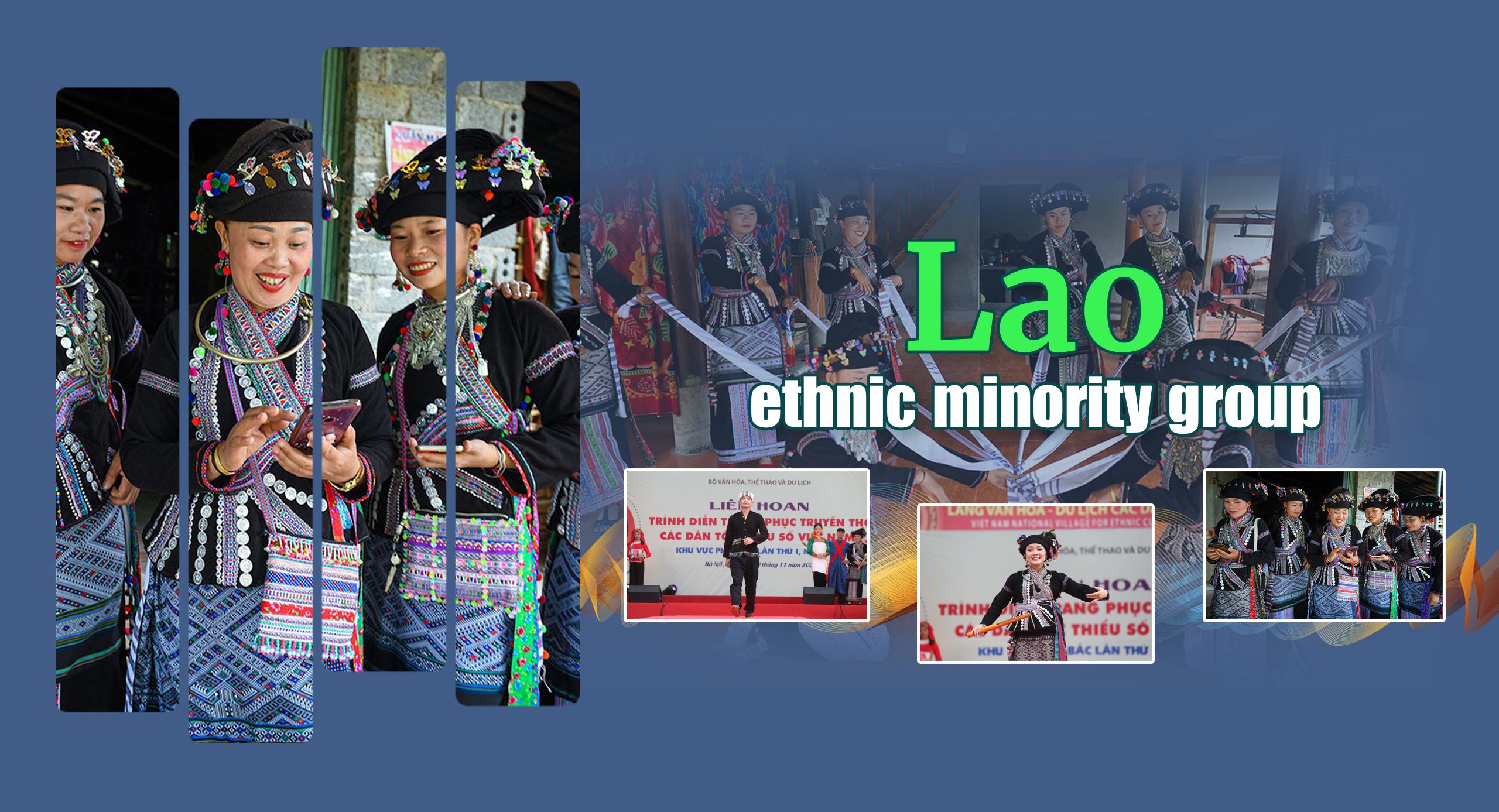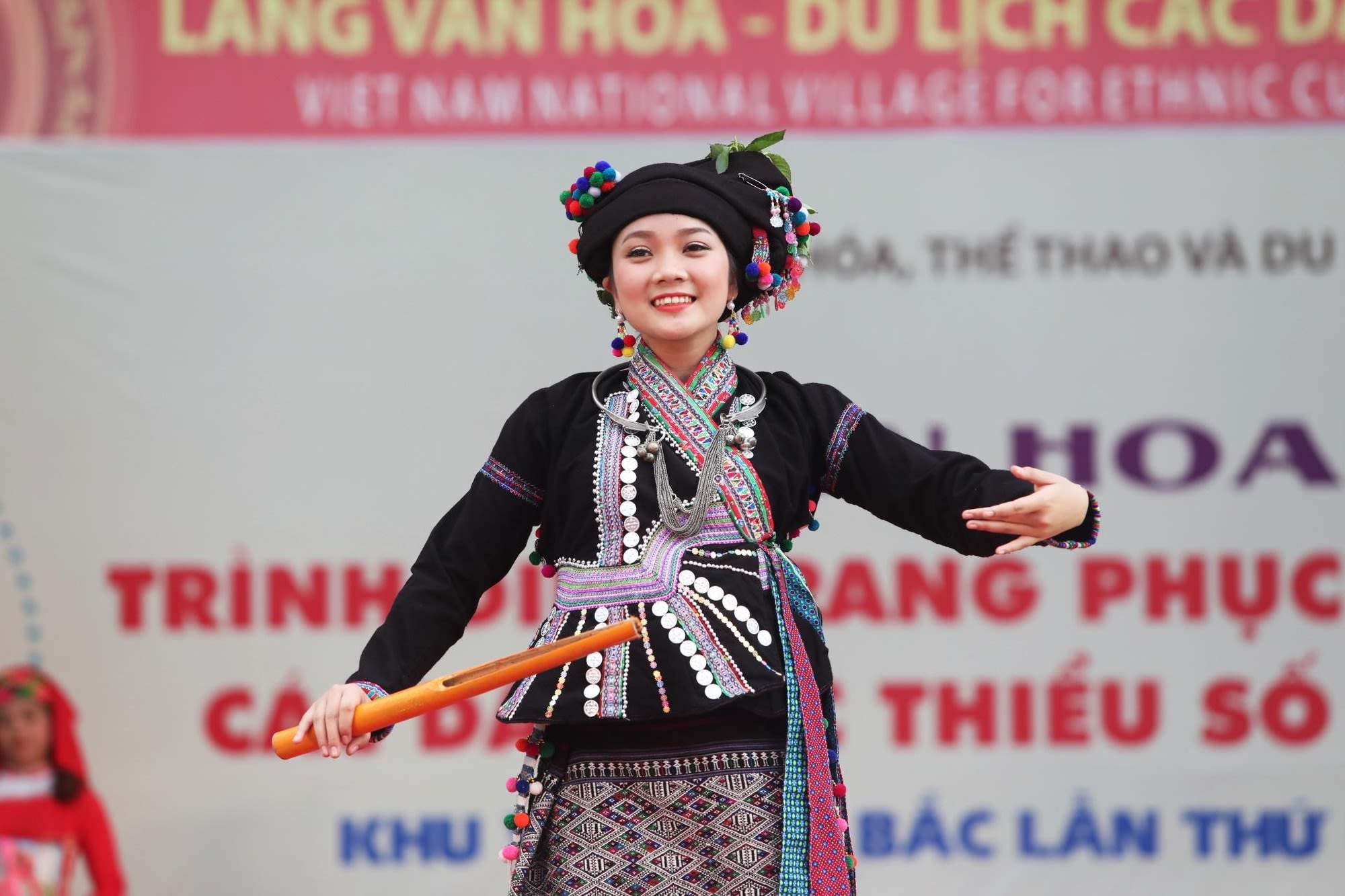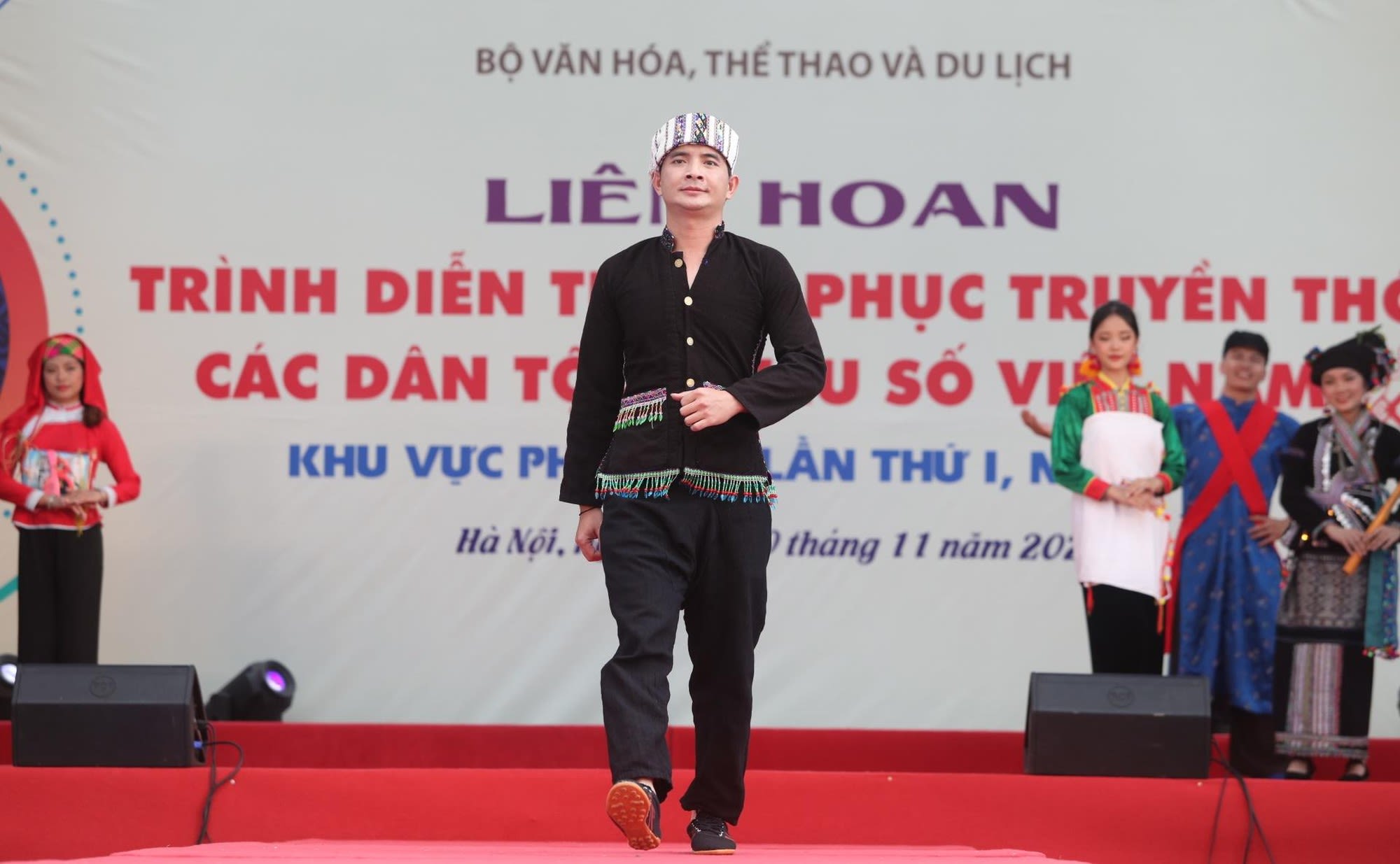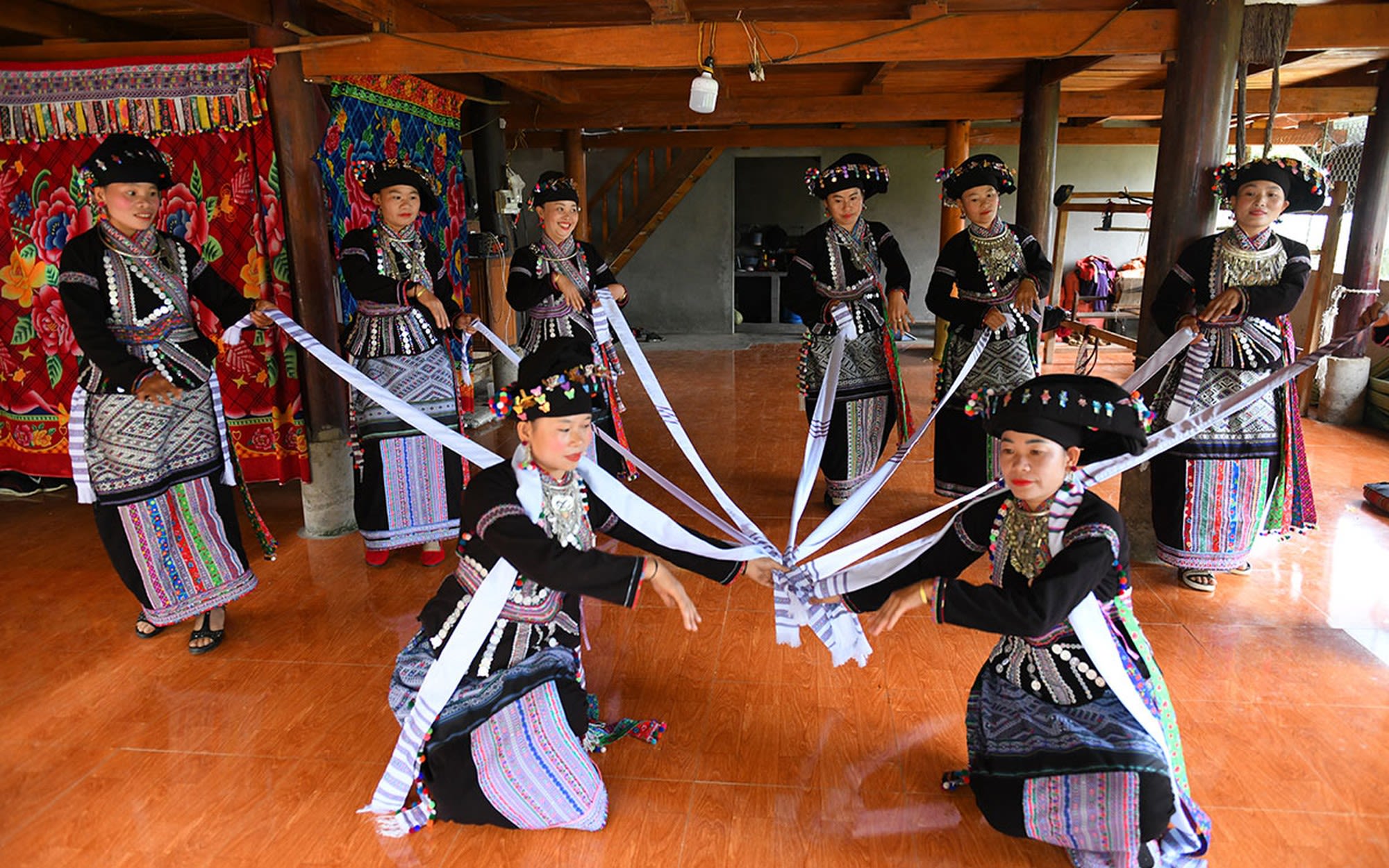
Language: Belonging to Tay - Thai language system (Thai - Kadai language family).
Residence: Lao ethnic minority people live mainly in the Northwest and North Central regions such as Lai Chau, Dien Bien, Son La, and Ha Tinh and some have moved to the South Central Highlands.
History: The Lao ethnic minority people in Vietnam originally migrated from the Lao People’s Democratic Republic.
The Lao ethnic group lives mainly in the Northwest and North Central regions. Lao people love singing and dancing and have rich folklore with many legends, fairy tales, and folk songs.
Origin
The Lao ethnic people migrated from the Lao People’s Democratic Republic.
Other names: Anak Ea De, Rade (or Rhade), e De, Egar, De.
Sub-groups: Kpa, Adham, Krung, Mdhur, Ktul, Dlie, Hrue, Bih, Blo, Kah, Kdrao, Dong Kay, Dong Mak, Ening, Arul, Hwing, Ktle,£pan, etc.
Geographical distribution
Lao ethnic minority people live mainly in the Northwest and North Central regions such as Lai Chau, Dien Bien, Son La, and Ha Tinh and some have moved to the South Central Highlands.
Population
According to the 2019 Survey of 53 ethnic minority groups, there are 17,532 Lao ethnic people in Vietnam, including 8,991 men and 8,541 women.
Language
The language belongs to Tay - Thai language system (Thai - Kadai language family).

Photo: Lao ethnic women. (Photo: KHIEU MINH)
Photo: Lao ethnic women. (Photo: KHIEU MINH)
Main features
Housing: Houses are usually divided into two main parts. The front part of the house covers the dining, kitchen and living areas of the whole family. The back of the house is a row of separate rooms - the sleeping space of parents and children. If the house belongs to the head of a family or the shaman, there is also a separate room for worship.
Costumes: Lao women often wear short tops and long skirts, that are tied around the chest and hang at the calf level. The hem of the skirt is embroidered with bright and colourful patterns such as trees, leaves, birds, and others. In addition to the short top, the Lao women’s long shirt is also sewn with indigo-dyed fabric, with buttons on the front of the shirt and a seam between the back of the shirt. In addition to dresses and tops, Lao women often have additional accessories such as ‘pieu’ headbands and silver hairpins.

Photo: Lao ethnic men’s costume. (Photo: KHIEU MINH)
Photo: Lao ethnic men’s costume. (Photo: KHIEU MINH)
The traditional costume of Lao men includes a headscarf, scarf, and a shirt made of indigo or ‘thoi’ fabric, without a drawstring but including an outer belt.
Diet: Lao ethnic people mainly eat sticky rice. Fish, snails, frogs, eel, and shrimp are their favourite food in their daily meals. In addition to the source of vegetables grown around the garden and on the upland fields, the Lao ethnic people also collect vegetables, tubers and fruits from the forest. They like to eat vegetables with bitter, sour, and acrid flavours.
In addition to salt, they often use “padec” (fish sauce) to season their food. On festive days, meals in both rural and urban areas often have fish salad or buffalo salad and beef salad, the so-called “larb”.

Photo: Lao ethnic women. (Photo: TRAN THANH DAT)
Photo: Lao ethnic women. (Photo: TRAN THANH DAT)
Art: Lao ethnic people love singing and dancing, especially traditional folk songs. The Lao people have rich folklore with many legends, fairy tales, and folk songs. Lao folk songs include many genres such as ‘lam’, ‘khap’, ‘kap’, and ‘an nang xu’, featuring the nuances of each region and locality. ‘Lam’ uses many genres of poetry that are popular throughout the country.
Lao women are not only good at singing but also very good at folk dances. The dances of the Lao ethnic people are often flexible and rhythmic to the beat of the drum while the movements are quite free. They often use musical instruments such as trumpets, drums, lutes, and flutes.
Social institutions: Today, the government apparatus is implemented in each village. Each village has a Secretary of its Party cell and a village head, who leads the village. In addition, there are village patriarchs who are prestigious and elderly people in the village, with great influence on each individual in the community. People comply with administrative management at the village level.
Religion and belief: Lao ethnic people have polytheistic beliefs, in which ancestor worship is very important to them. Each village has a shaman who specialises in worshipping when someone is sick or dead.
Buddhism has had a profound influence on the cultural and social life of the Lao people. Lao people follow the Buddhist calendar and celebrate their traditional lunar New Year in the fourth lunar month every year.

Photo: A dance of the Lao ethnic minority group. (Photo: TRAN THANH DAT)
Photo: A dance of the Lao ethnic minority group. (Photo: TRAN THANH DAT)
Economic conditions: Lao ethnic people in Vietnam mainly work in wet fields combined with upland cultivation. The Lao people have a clear and strict agricultural calendar, in terms of seasons, intercropping and harvesting. They can cultivate two rice crops per year with a crop beginning in November, December or early January and another crop in June or July. In addition, people also grow vegetables and herbs. Lao people in some places grow corn, cassava and other crops. They also raise livestock and poultry.
The side occupations of Lao people are very diverse. They make pottery with turntables to produce products such as jars, bowls, and pots. Their weaving is famous for many techniques which create high-value products with exquisite aesthetics. Blacksmithing and silver carving also contribute to generating a significant income for many families.
Educational conditions: According to the 2019 Survey on 53 ethnic minority groups, the rate of people aged 15 years and over who can read and write the Vietnamese language is 71.1% while the net attendance rate for children of primary school age is 100.5%, and of junior secondary school age is 96%, and of senior secondary school age is 48.9%. The percentage of people aged 15 years and over who can read and write their ethnic script is 1.39%. The percentage of children over 5 years old who can go to school accounts for 99.63%.